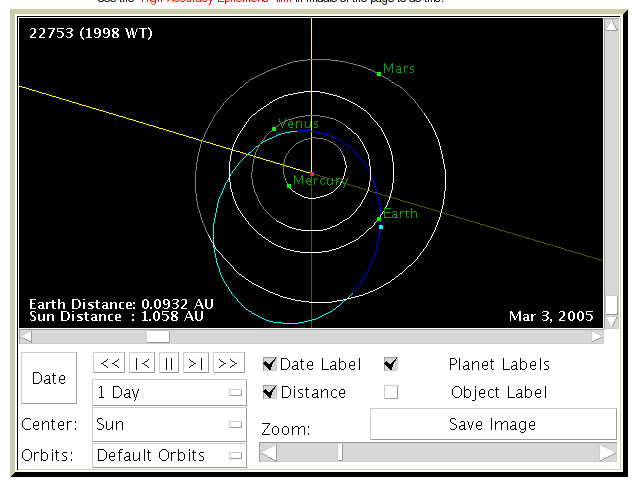
In 1998, astronomers discovered an asteroid which is not particularly interesting. It's not very large, or very bright. But it does have an orbit that's slightly unusual: instead of lying between the orbits of Mars and Jupiter, this particular asteroid -- called 1998WT -- flies in closer than Venus and out farther than Mars.

At times, the asteroid comes relatively close to the Earth. Don't worry, it won't hit the Earth any time soon. But it does approach closer than most asteroids ... as it did in early March 2005. Watch it move over several days.
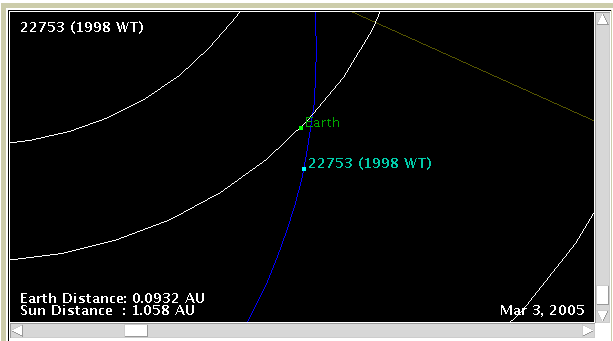
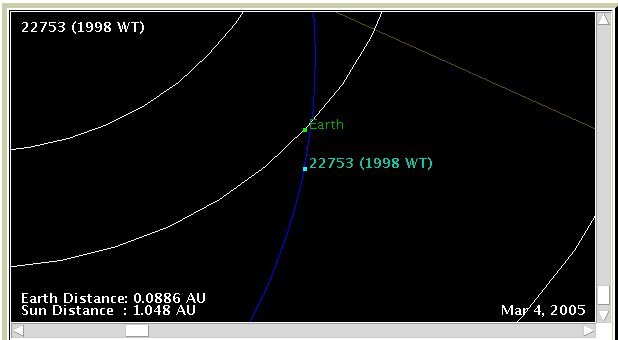
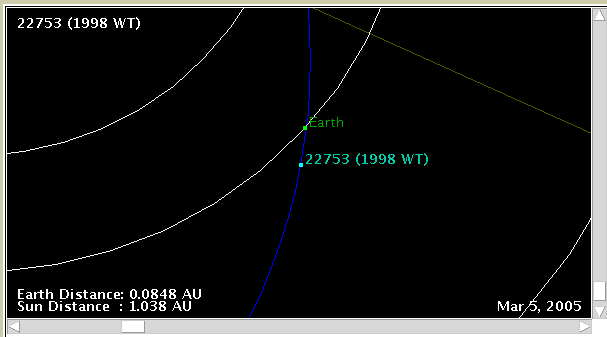
We took advantage of this opportunity to try to measure the distance to this asteroid by a technique called parallax, which involves simultaneous observations from different locations on Earth.
Larry Marschall and Christy Zuidema at Gettysburg College took a series of exposures with a relatively large field of view. If you click on the image below, you will see a short "movie" showing a set of 4 images taken at five-minute intervals. (The "movie" will loop twice.) Can you find the asteroid?
Vivian Hoette at Yerkes Observatory acquired a sequence of images over the same period. Her telescope and camera together have a smaller field of view.
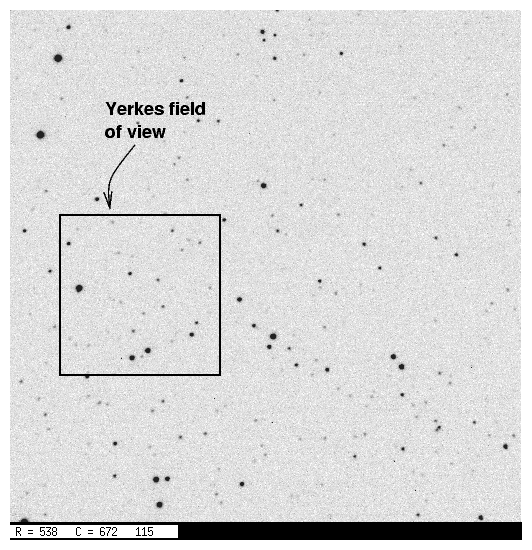
With fewer stars to check, it should be easier to find the asteroid. Once again, click on the image to see a short movie.
These images show stars near the position (RA, Dec) = (07:26:43, +00:46:40). Here's a small finding chart created using the Aladin tool which shows a closeup (about 14 arcminutes on a side) of the stars in this area.
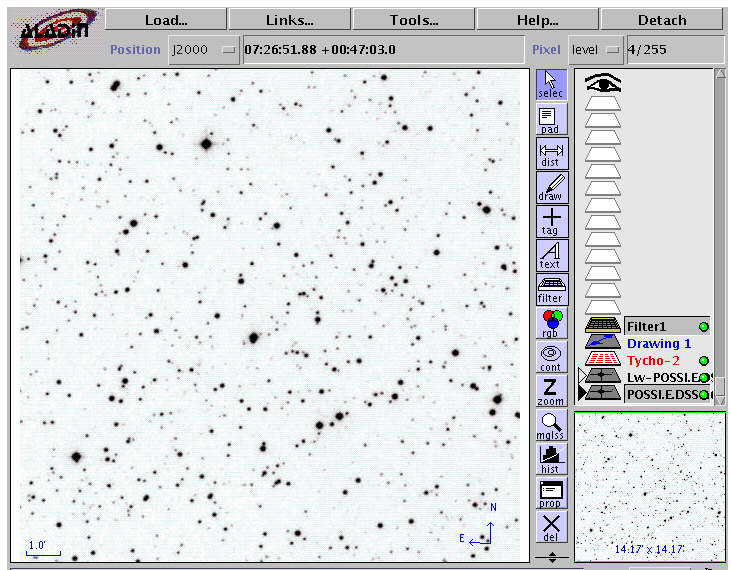
Let's label a few stars so that we can use them as references for position and brightness in our analysis.
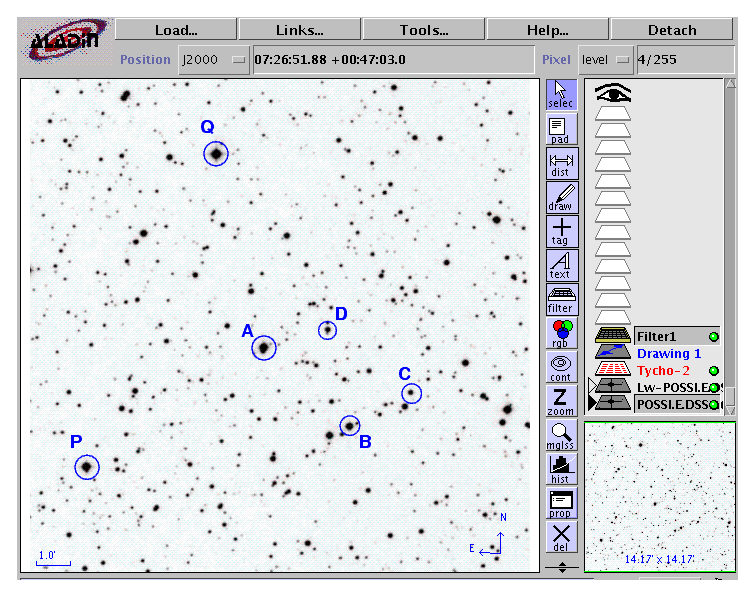
The UCAC2 catalog and provides the following positions and magnitudes for these stars:
star RA Dec UCAC2 mag
HH:MM:SS.sss degrees DD:MM:SS.ss degrees
-----------------------------------------------------------------------
A 07:26:44.867 111.6869450 +00:45:56.52 0.7657003 10.5
B 07:26:35.094 111.6462248 +00:43:42.61 0.7285028 11.3
C 07:26:28.154 111.6173065 +00:44:41.63 0.7448975 13.6
D 07:26:37.618 111.6567406 +00:46:27.28 0.7742450 13.1
P 07:27:04.918 111.7704927 +00:42:32.06 0.7089064 10.2
Q 07:26:50.352 111.7097995 +00:51:24.35 0.8567634 9.7
------------------------------------------------------------------------
Can you use these positions to figure out the distance -- in degrees, and in arcseconds -- between particular stars? Try to calculate
If you can measure the positions of the same stars on images from Gettysburg, in units of pixels, then you can figure out how many arcseconds correspond to one Gettysburg pixel. We call that the plate scale of the image. Can you figure out the plate scale for both the Gettysburg and Yerkes images?
If you are very ambitious, you can do something similar to measure the angle by which the Gettysburg images (and Yerkes images) may need to be rotated to bring them into perfect North-South-East-West alignment.
Here are copies of selected images from each site, in FITS format. I have translated the Gettysburg images from 32-bit floating point to 16-bit integer format.
(below are revised copies of the Yerkes images, with small fixes to the FITS header information. Thanks to Vivian Hoette 3/8/2005)
The Small Telescope Parallax Group is a very loose collection
of astronomers with small telescopes who enjoy occasional
parallax campaigns;
not to improve the orbits of asteroids,
but just because it's fun to do.
Other parallax resources: